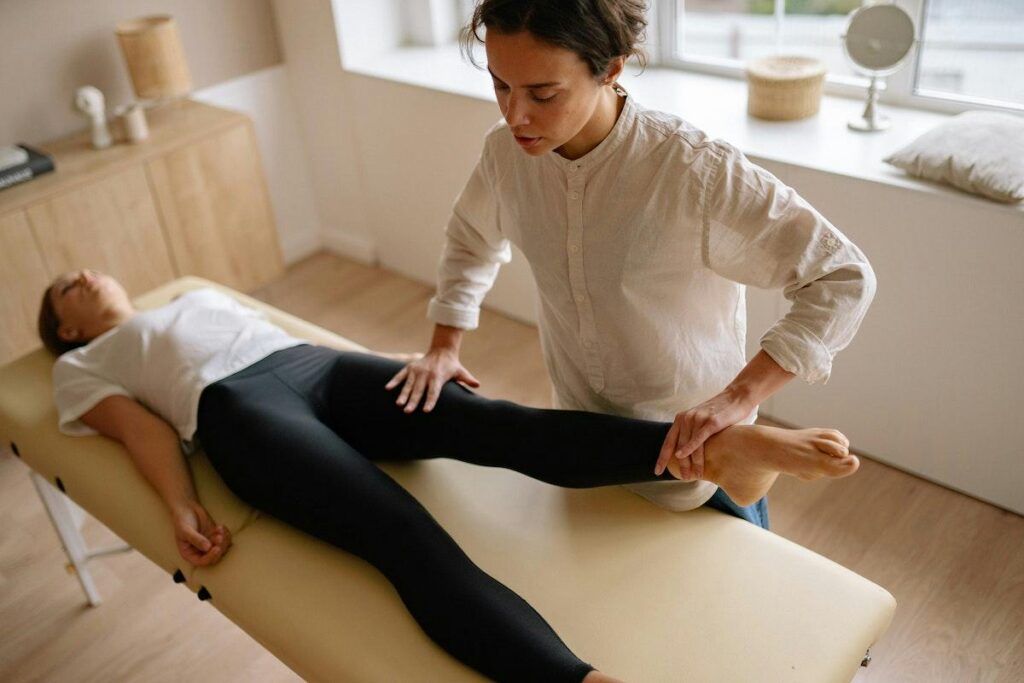
Introduction
Welcome to another enlightening blog post addressing the crucial topic of managing pelvic pain through physical therapy. Whether you’re someone seeking to expand your knowledge on this subject or someone grappling with persistent pelvic discomfort, understanding the causes, symptoms, treatment options, and preventive measures for pelvic pain is crucial.
Pelvic Pain: A Comprehensive Examination
Pelvic pain is a complex condition that can affect people of all genders and ages. It can disrupt daily life, hinder mobility, and significantly impact overall well-being. Let’s explore the key aspects of pelvic pain:
What is Pelvic Pain?
Pelvic pain is a general term used to describe pain or discomfort in the pelvic region, which encompasses the lower abdomen, genitals, and pelvic floor muscles. It can arise from various factors, including musculoskeletal issues, nerve dysfunction, inflammation, and more.
Contributing Factors
Pelvic pain can be triggered by several factors, such as muscle imbalances, trauma, infections, hormonal changes, and even psychological stress. Understanding these factors is crucial in both preventing and managing the condition effectively.
Recognizing the Signs of Pelvic Pain
Pelvic pain presents with a wide range of symptoms, which can vary from person to person:
- Aching or Burning Sensation: One of the primary symptoms of pelvic pain is a persistent aching or burning sensation in the pelvic region. This discomfort may be constant or intermittent and can vary in intensity.
- Discomfort During Intercourse: Many individuals with pelvic pain experience discomfort or pain during sexual intercourse, which can have a profound impact on their relationships and quality of life.
- Urinary Symptoms: Pelvic pain can sometimes be associated with urinary symptoms such as urgency, frequency, or pain during urination.
- Bowel Symptoms: Some individuals with pelvic pain may also experience changes in bowel habits, including constipation or diarrhea.
The Role of Physical Therapy in Managing Pelvic Pain

Now that we’ve explored the nuances of pelvic pain, let’s discuss the pivotal role that physical therapy plays in managing this condition.
Professional Assistance: A Vital Step
If you suspect you have pelvic pain or are already dealing with the symptoms, seeking professional assistance from a physical therapist is crucial. Early intervention through physical therapy can significantly improve your recovery and help you regain a pain-free and fulfilling life.
The Importance of Early Intervention
Timely diagnosis and treatment are paramount when dealing with pelvic pain. Delaying treatment can lead to prolonged discomfort and potential complications, making it essential to address the issue promptly.
Regaining Comfort and Functionality Through Treatment
When it comes to addressing pelvic pain, physical therapy plays a pivotal role in helping individuals regain comfort and functionality in their pelvic region. Here’s what you can anticipate during physical therapy:
- Personalized Treatment Plans: Your physical therapist will design a tailored treatment program focused on addressing the specific causes of your pelvic pain. This may include exercises to strengthen or relax pelvic floor muscles, manual therapy techniques, and strategies to improve posture and body mechanics.
- Pelvic Floor Muscle Rehabilitation: Pelvic pain often involves dysfunction of the pelvic floor muscles. Your therapist will work with you to retrain and rehabilitate these muscles to reduce pain and improve function.
- Pain Management Strategies: Your therapist can provide strategies for managing and reducing pelvic pain, including relaxation techniques, pain education, and posture adjustments.
Effective Strategies for Pelvic Pain Prevention

Preventing pelvic pain is as important as managing it. Here are some strategies to help prevent pelvic pain:
- Pelvic Floor Exercises: Incorporate pelvic floor exercises into your routine to maintain the strength and flexibility of these muscles. Your physical therapist can guide you on appropriate exercises.
- Stress Management: Chronic stress can exacerbate pelvic pain. Implement stress management techniques such as mindfulness, relaxation, and deep breathing to reduce tension in the pelvic region.
- Healthy Lifestyle: Maintain a healthy lifestyle with a balanced diet, regular exercise, and adequate hydration to support overall pelvic health.
Frequently Asked Questions:
Q: Can I continue with my daily activities if I have pelvic pain?
A: It’s essential to consult with a physical therapist for a proper assessment and treatment plan. With the right guidance and treatment, many individuals with pelvic pain can continue their daily activities and regain their quality of life.
Q: Are there specific exercises to prevent pelvic pain?
A: Yes, physical therapists can recommend exercises tailored to your needs to prevent pelvic pain. These exercises often focus on pelvic floor muscle strength and coordination.
Q: How long does it take to recover from pelvic pain?
A: Recovery time varies depending on the underlying causes and individual factors. With proper treatment and rehabilitation, many individuals can experience significant improvement within a few weeks to a few months. However, more complex cases may require a longer recovery period.
Conclusion
In conclusion, pelvic pain can be a challenging condition to deal with, but with the guidance of a professional physical therapist, you can effectively manage pain, recover, and prevent future setbacks. Don’t let pelvic pain disrupt your life. If you’re experiencing pelvic pain or suspect you have this condition, reach out to a qualified physical therapist for a comprehensive evaluation and a personalized treatment plan. Your path to a pain-free and fulfilling life begins with professional guidance and physical therapy at WildHawk Physical Therapy located in Asheville, NC.








